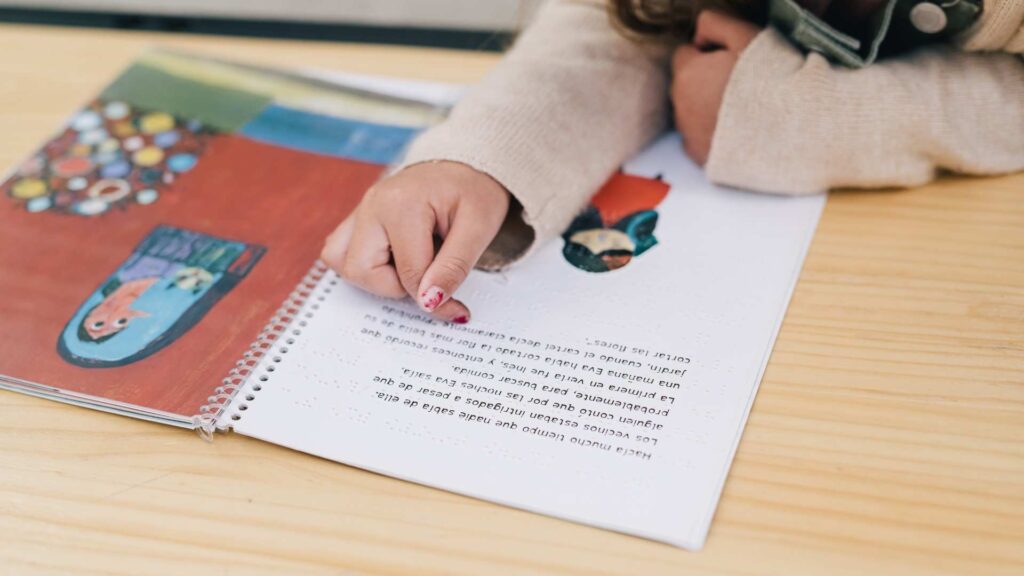Table of Contents
Can Children with Autism Be Bilingual?
In today’s beautifully diverse world, language is more than just a way to communicate: it’s how we connect, share love, and express identity. For families raising children with autism, however, questions about autism and bilingualism can make navigating multiple languages feel uncertain or even daunting. Many parents wonder: Can children with autism be bilingual? Will learning two languages make communication more complicated? Or could bilingualism actually support their child’s growth and understanding?
These questions are more common than you might think. Across cultures, countless families face the delicate balance between preserving their heritage language and supporting their child’s developmental needs. The intersection between autism and bilingualism reveals something powerful: children with autism are capable of remarkable language learning when provided with the proper guidance, patience, and individualized care.
The truth is that autism and bilingualism can coexist harmoniously and even complement one another. Research increasingly shows that bilingual exposure does not hinder language development in ASD. In fact, maintaining two languages can foster stronger family bonds, cultural identity, and even cognitive flexibility.
For parents, this journey is often filled with both uncertainty and hope. Keep reading this blog by ABA Centers of Pennsylvania and discover how, with compassion, structure, and professional guidance such as ABA Therapy, bilingual families can help their children thrive linguistically, socially, and emotionally in every language that makes them who they are.
The Relationship Between Autism and Bilingualism
Many families wonder whether exposure to two languages could confuse a child with autism or delay communication milestones. However, studies suggest otherwise. According to the Journal of the American Academy of Child and Adolescent Psychiatry, approximately one in four children with ASD grows up in a bilingual household, and these children can successfully acquire two languages.
In fact, research from the National Autistic Society shows no evidence that bilingualism negatively affects language development in ASD. Similarly, findings published in the Journal of Autism and Developmental Disorders indicate that bilingual children with autism can effectively learn, understand, and use multiple languages, often showing comparable or even stronger cognitive flexibility than monolingual peers.
This growing body of research underscores a simple truth. When it comes to autism and bilingualism, the focus should be on the child’s individual needs, not on restricting their linguistic environment.
Common Challenges in Autism and Bilingualism
While autism and bilingualism can coexist successfully, families often face distinct challenges that require patience and strategic support.
- Delayed Language Milestones:
Children with autism may experience delays in communication milestones. When learning two languages, these delays might be slightly more pronounced. Still, they do not indicate a lack of ability: only the need for more structured, consistent support for language development in ASD.
- Mixing Languages (Code-Switching):
It’s common for bilingual children to switch between languages when speaking. For bilingual children with autism, this may occur more frequently, sometimes leading to confusion. Yet, this behavior is a natural part of bilingual communication.
- Difficulty Generalizing Skills:
Children with autism often find it challenging to generalize what they’ve learned in one context to another. They might know a word in one language at home but not use it in school or social settings.
- Increased Cognitive Effort:
Switching between languages requires mental flexibility. For children with ASD, this can sometimes make comprehension and expression more demanding, though the long-term cognitive benefits of bilingualism often outweigh these initial hurdles.
Family Decisions in Bilingual Households with Autism
Every bilingual family affected by autism faces a profoundly personal decision: which languages should be used at home and in therapy? According to the American Speech-Language-Hearing Association (ASHA), bilingualism refers to using two or more languages in daily life. The key lies in balance and consistency.
For some families, it makes sense for one caregiver to speak one language, and the other another consistently. For others, prioritizing the language used in school or community life feels more natural. The important thing is creating an environment that supports language development in ASD across all settings.
Ultimately, children with autism thrive on predictability and familiarity. By aligning language exposure with the child’s natural routines, families can nurture both communication and emotional connection without overwhelming them.
How to Support Language Development in ASD Through Bilingualism

Encouraging bilingualism in a child with autism is possible and can be profoundly beneficial. Here are a few relevant strategies parents and caregivers can use to empower language development in ASD while maintaining a bilingual home:
- Maintain Consistency:
Stick to a clear pattern of language use. For example, if one caregiver speaks English and another speaks Spanish, remain consistent. This strategy helps children understand when and how to use each language.
- Encourage Expression in Both Languages:
Celebrate all communication efforts, even partial words or short phrases, in either language. Positive reinforcement builds confidence and motivates continued practice.
- Incorporate Visual Supports:
Visual aids such as pictures, flashcards, or digital tools can make language development in ASD more interactive and engaging. Pairing visuals with words enhances understanding in both languages.
- Be Patient and Positive:
Bilingual children with autism may take longer to develop fluent communication, but progress is still meaningful. Emotional support and encouragement are essentials of their journey toward bilingual success.
Embracing Autism and Bilingualism with Compassion
The relationship between autism and bilingualism challenges outdated assumptions and opens new doors for families. By approaching language development in ASD with empathy, patience, and expert support like ABA therapy, parents can nurture communication skills that extend far beyond words.
Bilingualism is not an obstacle for children with autism: it’s an opportunity for connection, culture, and understanding. With the right tools and guidance, your child can grow confidently in both languages, embracing the best of both worlds.
The Role of ABA Therapy in Autism and Bilingualism
Applied Behavior Analysis (ABA) Therapy is one of the most effective approaches for supporting language development in ASD. At its core, ABA focuses on positive reinforcement, structured learning, and individualized goals, all of which are crucial for bilingual children with autism.
At ABA Centers of Pennsylvania, therapists use evidence-based techniques to address communication challenges in both primary and secondary languages. This approach includes promoting joint attention, expanding vocabulary, and fostering social communication in diverse environments. By tailoring strategies to the child’s language profile, ABA therapy helps bridge the gap between autism and bilingualism, supporting meaningful and measurable growth.
Families across Pennsylvania have found hope through this holistic approach. Autism experts design each session not only to improve communication but also to empower children to thrive in both their languages and their world.
If you’d like to understand how ABA therapy can support your child’s language development in ASD, schedule a free consultation with our team by clicking here or calling us at (844) 444-7496. Let’s explore the best approach for your child’s bilingual growth.








